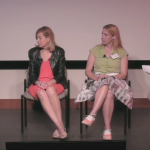Yep… I was in New Orleans…
… at a conference with just over 2,000 of my friends. It was a wonderful time, right up until the last day when I felt pretty sick (felt like a bad head cold + muscular soreness). I figured it was the flu, but out of an abundance of caution, I got a COVID RT test from the pharmacy and found that I was positive!
I was a long way from home, so I stayed, isolated in a local hotel until it was okay for me to be out in polite company again. It wasn’t New Orleans fault–it’s still a wonderful city–but too many people, too soon, in quarters that were a bit too close.
But now we know.
Before that happened, I had a couple of SRS questions that popped up for me this past week. Can you help me figure them out?
1. One of the great symbols of New Orleans are the steamboats that used to ply the river. They’re wedding cakes on the water, full of color, decoration, and outsized components. They don’t use propellers, they use giant paddlewheels driven by large steam engines. One of the most noticeable parts of a traditional steamboat are the smokestacks. In this image of the riverboat “City of New Orleans,” you can see that the top of the smokestack ends in an incredibly elaborate patterning at the very top. Since you see this kind of thing on nearly all steamboat smokestacks, that made me wonder–is that patterning at the top purely decorative, or does it have some kind of function? What can you find out?
I did a search for:
[ steamboat smokestack decoration on top ]
to start. Note that I did NOT include any localization information (not Mississippi, nor New Orleans), trusting that the results I’d get would be already localized to the US. (If you do this query in other countries, you might get very different results. In such cases, you’d probably have to include some locale identification information.)
In the results to this query, I found a great source, Riverlorian.com (by Jerry Hay, author of multiple books about US river lore and a guide aboard the American Queen and the Delta Queen Mississippi steamboats). In this site, Hay writes that:
“Steamboats had tall smokestacks. The boats originally had boilers fired by wood. Along with the smoke there would often be flaming embers coming up from the furnace and out of the top of the smokestack. Those embers could and did start fires when they landed on the top deck or cargo. Tall stacks would give the embers a better chance to burn out before reaching the deck. In addition, the top of the stacks were “fluted”. Fluting consisted of wire or steel mesh and acted like a small fence that would break the embers into small pieces. Smaller embers were more likely to burn out faster than larger pieces. As fancier boats were built, the fluting became very ornamental and eventually came to be considered an essential decorative element of the smokestack. Those vessels with the fancy smokestacks and decorative flutes became known as high-falutin’ boats.”
It’s pretty clear that the design of these steamships was very fanciful, full of enough decoration to choke a horse. In 1886, one of these steamships was described in The River Road Rambler as:
The J. M. White… was 325 feet long with a public salon large enough, it was said, to hold three-hundred waltzing couples under ‘seven 16-burner gold-gilt chandeliers… made of fine brass, highly polished, and then… covered with pure gold.”
There were also stained-glass windows, ample staterooms with full-size beds, and one of her two bridal chambers was paneled in mahogany and satinwood, the other in rosewood and satinwood…
You get the idea. Decoration for its own sake was happily accepted, but the decorative fluting atop the smokestacks also seemed to be primarily decorative. The spark arrestors (such as they were) seem to have been simple “wire meshes” (as Hays writes). Meanwhile, other contemporary steamships, like the Multnomah (1851), which served in Washington state, had fairly elaborate spark arrestors.
But here’s the thing–spark arrestors, as seen on the Multnomah, were fairly well-developed technology. By the time of the great Mississippi steamboats like the Natchez or the City of New Orleans, spark arrestors were well known gadgets. In fast, the patent office had more than a dozen patents for improvements to spark arrestors filed before 1890. Most involved a distinctive swelling in the stack to contain the arresting mechanism!
 |
| US Patent for an “Improved Spark Arrestor” (1855) |
 |
| Two steamboats in Memphis, 1906–one with spark arrestors (left) and one with only screen arrestors (right). P/C Library of Congress. |
But spark arrestors are something else to maintain and are prone to getting deposits of creosote from the burning wood (and then catching on fire themselves).
So the elaborate leaf-like structures seem to have evolved from the meshes built in to arrest sparks and embers. But as far as I can tell, they don’t actually do much to suppress anything. (They do look very cool, however…)
2. While New Orleans is a generally colorful place, three colors seem to dominate: purple, gold, and green. Is this color scheme really a thing? Or am I making a vast overgeneralization?
I’m going to quote much of mateojose1’s explanation (which is very well done).
* The carnival king needed a flag, which needed three colors (since the America, British, and French flags are all tri-colored). Red, white, and blue were dismissed, since they were colors for republics and revolution, which would not be appropriate for a king.* Purple was likely chosen because it’s long been connected with royalty.* They also followed the rules of heraldry (which the people who organized the Rex event were likely familiar with), and those fields need both a metal (gold or silver [white]) and a color (black, green, purple, blue, and red). So, gold was chosen (since white was widely used), and green was chosen, since black didn’t go so well with gold and purple.
3. There also seems to be an awful lot of fleur de lis in the decoration of New Orleans, you see them absolutely everywhere (including between the smokestacks above!): Why?
SearchResearch Lessons
This was a fun Challenge, exercising our ability to read multiple sources and find the answers we seek. If there’s a big lesson from this week it’s this:
1. Read multiple sources for every answer you seek. In all of the above research, we sought out multiple sources for every claim made. We also checked the sources themselves (e.g. “who is Errol Labourde?”) Some of these require close reading, an essential skill for the practical SearchResearcher!
Search on!








